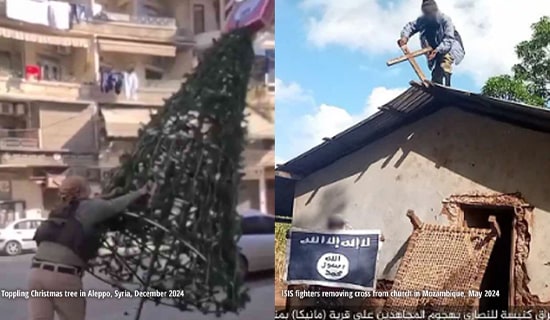On October 25, 2023, the UN Security Council held a debate concerning Hamas' October 7 attack on Israel. Setting the stage for the debate, UN Secretary-General Antonio Guterres said: "It is important to also recognize that the attacks by Hamas did not happen in a vacuum. The Palestinian people have been subjected to 56 years of suffocating occupation."[1]
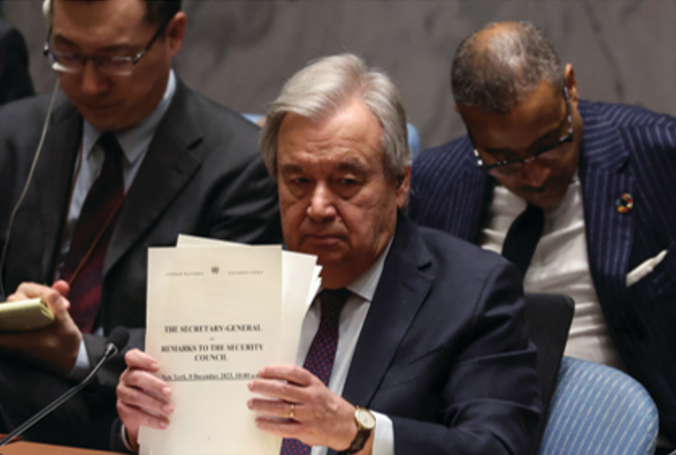
In 2018, Israeli Prime Minister Benjamin Netanyahu defended his policy of allowing the transfer of billions of dollars in Qatari aid money to Hamas-controlled Gaza by saying that the money was needed "to prevent a humanitarian disaster" in the Gaza Strip.[2]
American political scientist Norman Finkelstein said on October 7, the day of the Hamas attack: "For the past 20 years the people of Gaza, half of whom are children, have been immured in a concentration camp."[3] Later, in a November 23, 2023 interview, Finkelstein called the Hamas attackers "concentration camp inmates… who burst the gates of Gaza."[4]
In 2010, then-UK prime minister David Cameron called Gaza a "prison camp." Cameron is currently UK foreign secretary.[5]
In 2009, former U.S. presidential candidate Ron Paul said that Palestinians in Gaza are "virtually…in a concentration camp."[6]
In 2009, former U.S. presidential candidate Pat Buchanan said that Gaza is "an Israeli concentration camp."[7]
All of these claims are totally false.
In the case of Netanyahu, it was an attempt to justify his decade-long policy of funneling the Qatari billions to Hamas, a policy that enabled this jihadi organization to build its military empire and carry out its October 7 attack.
Before the present war, the Gaza Strip – which has not been under Israeli occupation for 18 years, since the Israeli forces withdrew from it in 2005 – resembled a local Dubai more than it resembled the poverty-stricken city that is envisioned by many. It is also important to note that, despite the claim that Gaza is under "a total siege," its border with Egypt has been open, with hundreds of thousands of people crossing in and out of the Strip every year, and an average of 700 trucks of goods and supplies entering Gaza from Israel every day.
This report is another in the series titled "Gaza Before October 7,”[8] showing the true face of the "suffocating occupation" and "humanitarian disaster" that supposedly prevailed in the Gaza Strip before the start of the present war. The series will present videos, photos and data on life in Gaza – all of them from Palestinian, Arab, UN and other non-Iraeli sources. It will give a general picture of the Strip: its residential areas and tower blocks, its universities and other higher education institutions, its health facilities and hospitals, its banks and financial institutions, its malls and markets, and its recreation facilities such as the water park, music center and zoo. The series will also present data on standards of living, income and infrastructure (such as water desalination plant) in Gaza.
Gaza had its poorer areas, primarily the refugee camps; they will be shown in the series, and the viewer can compare them to refugee camps and slums in other parts of the world.
Two important points must be stressed. First, that the reality of life in Gaza before the war, as will be documented in this series, did not in itself constitute a political solution to the problem of Gaza, a solution that is and was sorely needed.
Second, the Israeli counterattack has caused immense devastation in the built-up parts of the Gaza Strip, as well as many civilian casualties, as a result of Hamas' policy of using civilians as human shield, in violation of international law. This series does not show Gaza as it is today, but as it was before the war began.
The "Gaza Before October 7" Series
Part I of the "Gaza Before October 7" the series is a video filmed by Palestinian social media influencer and journalist Yousuf Alhelou showing everyday life in Gaza.[8]. To view the video, click below:
Part II is a video filmed by Palestinian social media influencer and journalist Yousuf Alhelou showing everyday life in Gaza. To view the video, click below:
Part III is an Al-Jazeera TV report on the boom in Gaza consumer enterprises.
To view the clip, click here or below:
Part IV is three videos about the month of Ramadan in the Gaza Strip.
To view the video "Report About Ramadan In Gaza: The Atmosphere Here Is Special, There Is Nothing Like It Anywhere Else In The World," click here or below:
To view the video "Turkish TV Reporter Visits Gaza Market and Mosque in Ramadan," click here or below:
To view the video "TV Report On Ramadan Atmosphere At Care4 Mall In Gaza City Showcases Supermarket Laden With Produce And Groceries," click here or below:
Part V of this series is 10 videos about Gaza sports clubs.
1. To view the video "Gaza: Horseback Riding Championship Activities," uploaded in 2019 by Alghad Extra, click here or below:
2. To view the video "Palestine Bodybuilding Championship in Gaza, uploaded in 2022 by
واقع الغزاوي ("Reality of a Palestinian"), click here or below:
3. To view the video "Table Tennis Robot Used In Practice For The First Time In Gaza," uploaded in 2020 by Champions Academy, click here or below:
4. To view the video "Southern District Finals In Karate (Women) In The Gaza Strip," uploaded in 2022 by Radio A-Shabab 98.2 FM (راديو الشباب), click here or below:
5. To view the video "Palestinian engineer invents 'water city' in Gaza," uploaded in 2019 by Alghad TV, click here or below:
6. To view the video "Palestinian Parkour Championship For Kids Held In Gaza," uploaded in 2021 by AlistiqlalSport, click here or below:
7. To view the video "First-Ever Palestinian Women's Baseball Team In Gaza," uploaded in 2018 by Aljazeera Arabic, click here or below:
8. To view the video "Al-Aahali Gaza Soccer Highlights," uploaded in 2023 by Alkofiya TV, click here or below:
9. To view the video "Highlights From Gaza Beach Soccer Championship," uploaded in 2019 by Alkofiya TV, click here or below:
10. To view the video "Highlights From Gaza Women’s Basketball Championship," uploaded by Mahmoud Ajjour, click here or below:
Part VI of this series comprises video reports, by Sky News Arabia and AFP Arabic, on the Meow Cat Café in Gaza, where patrons can enjoy their coffee and play with cats in a brightly lit and cheerfully decorated space.
To view the report by Sky News Arabia, dated September 2023, click here:
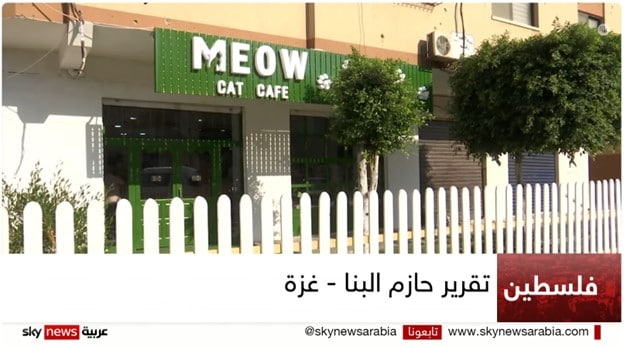
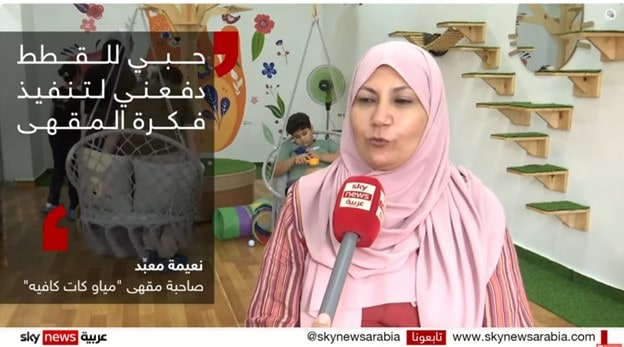
To view the report by AFP Arabic, dated August 2023, click here:
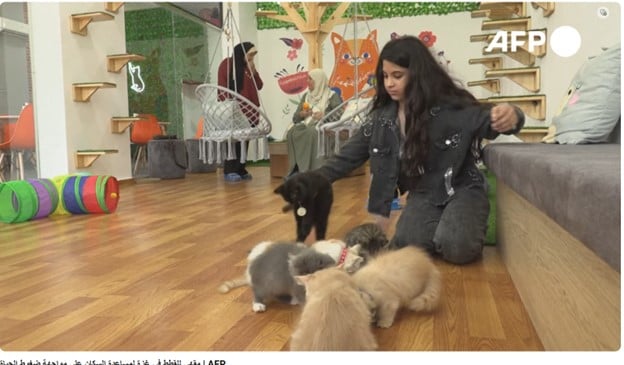

Part VII of this series:
Palestinian Refugee Camps In The Gaza Strip Prior To October 7
Introduction
According to the United Nations Relief and Works Agency for Palestine Refugees in the Near East (UNRWA), as of 2023, the Gaza Strip includes eight refugee camps, the largest of which is Jabalia in the northern part of the Strip, where 116,000 Palestinians are registered as refugees.[1]
Palestinian statistics show that prior to the current war, virtually nobody in in any mukhayam – "refugee camp," from kheyma, "tent" – in the Gaza Strip was actually living in a tent. Prior to October 7, the average housing density in Gaza was 1.7 persons per room; 21.2% of the population lived in a house or a villa while the rest (77.8%) lived in apartments. Most residents (78%) owned their homes or apartments.[2]
In 2021, 100% of Gaza's residents had access to electricity.[3] Daily per capita consumption of water in Gaza was 86.6 liters per day – four liters more than average daily consumption in the West Bank,[4] and in Jordan the average person has access to only 61 liters of water daily.[5]
The following photos show the difference between Jabalia in the Gaza Strip and other "refugee tent camps" in the Middle East.
Jabalia refugee camp in the northern Gaza Strip

In contrast to the Al-Hawl refugee camp in Syria
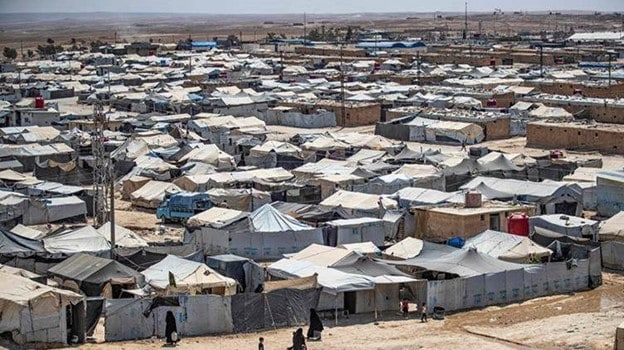
And the A-Zaatari refugee camp in Jordan.
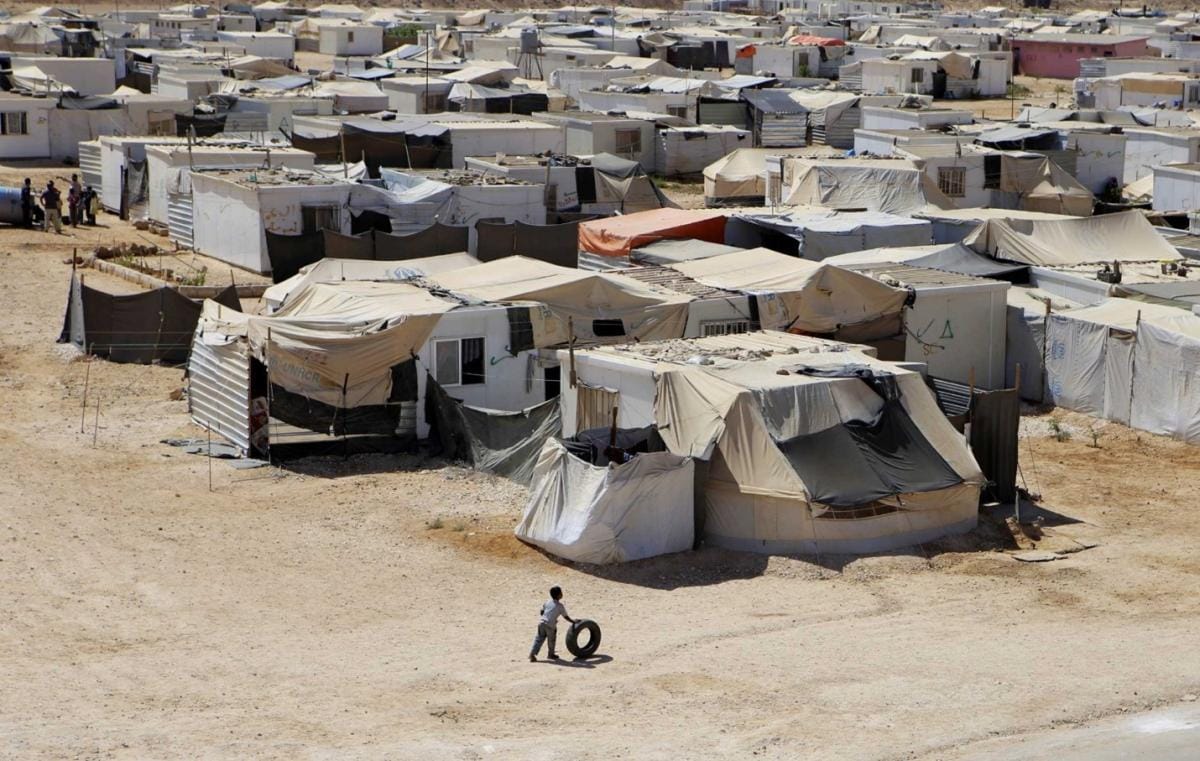
Note: All information and data in this section are taken exclusively from Palestinian media and social media posts by Palestinians.
Photos From Jabalia Refugee Camp
Source: AlQudsWebTV YouTube channel, uploaded 2022
محطات العودة مخيم جباليا (youtube.com)
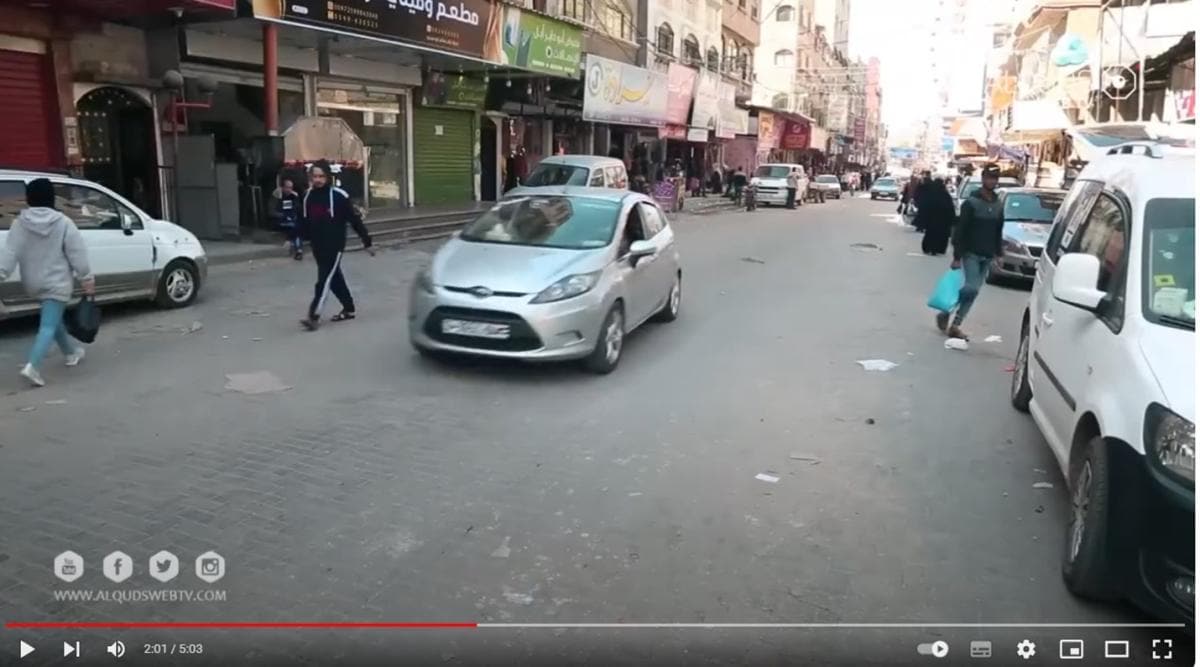
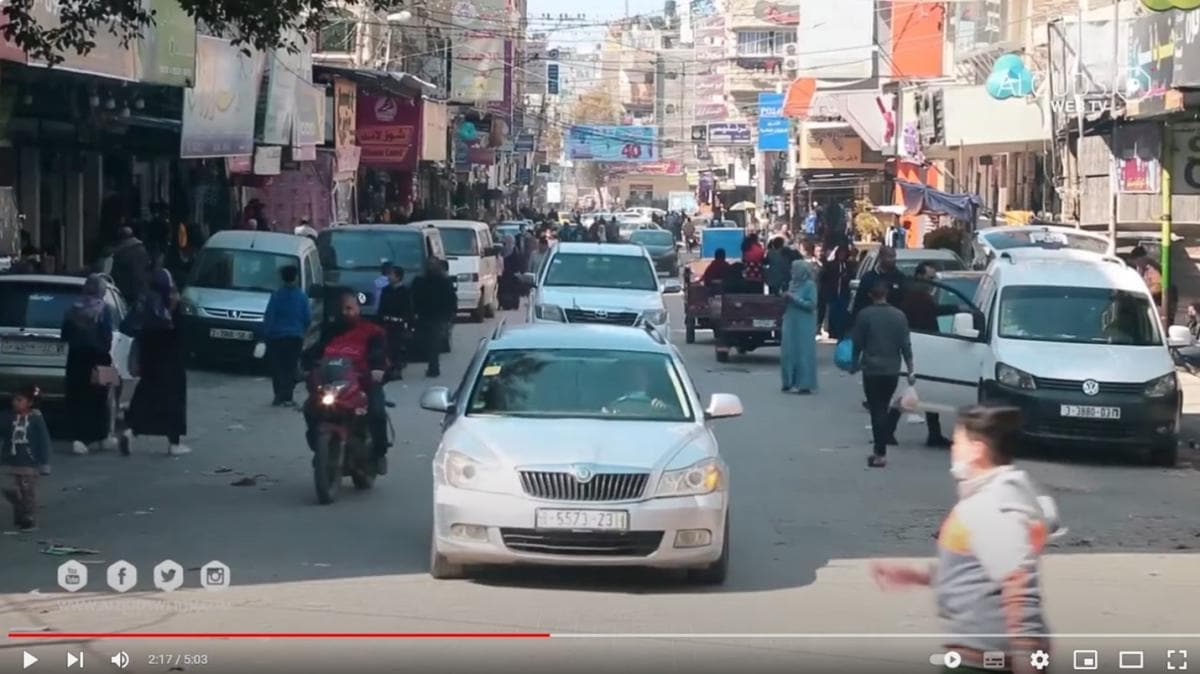

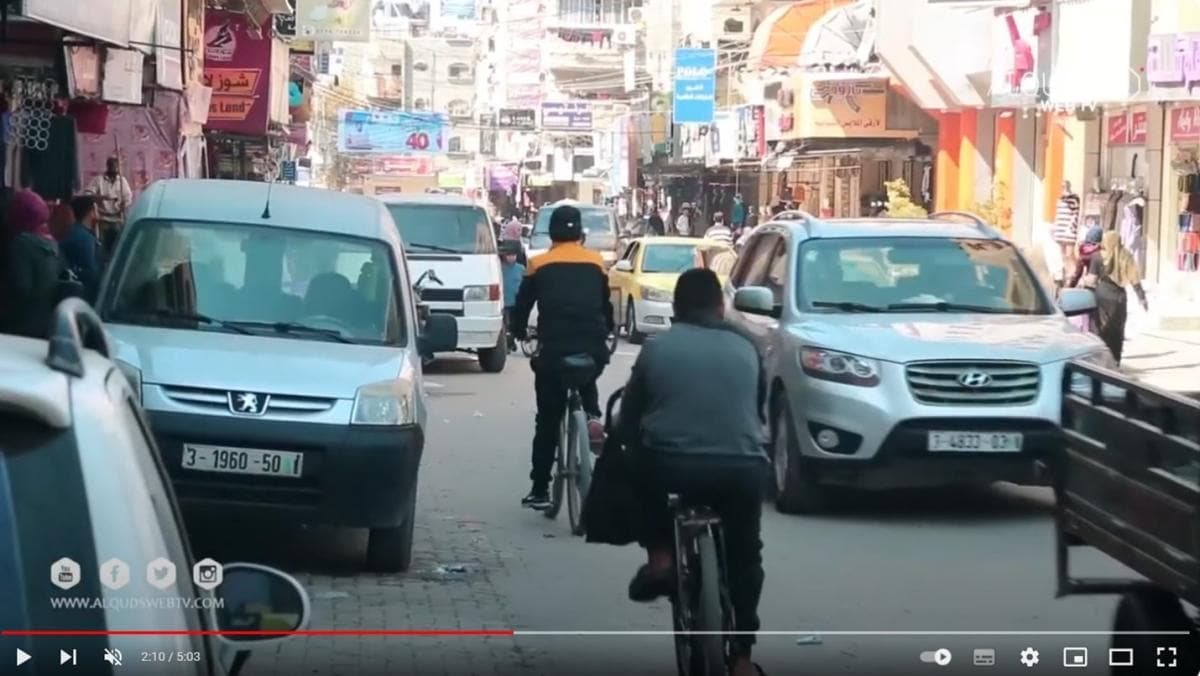
Photos From Jabalia Refugee Camp
Source: محمد جهاد الدلو YouTube channel, uploaded 2023
#شاهد #فلوج أجواء #رمضان وما قبل الإفطار في مخيم #جباليا - YouTube
The main souk or marketplace and adjacent streets:
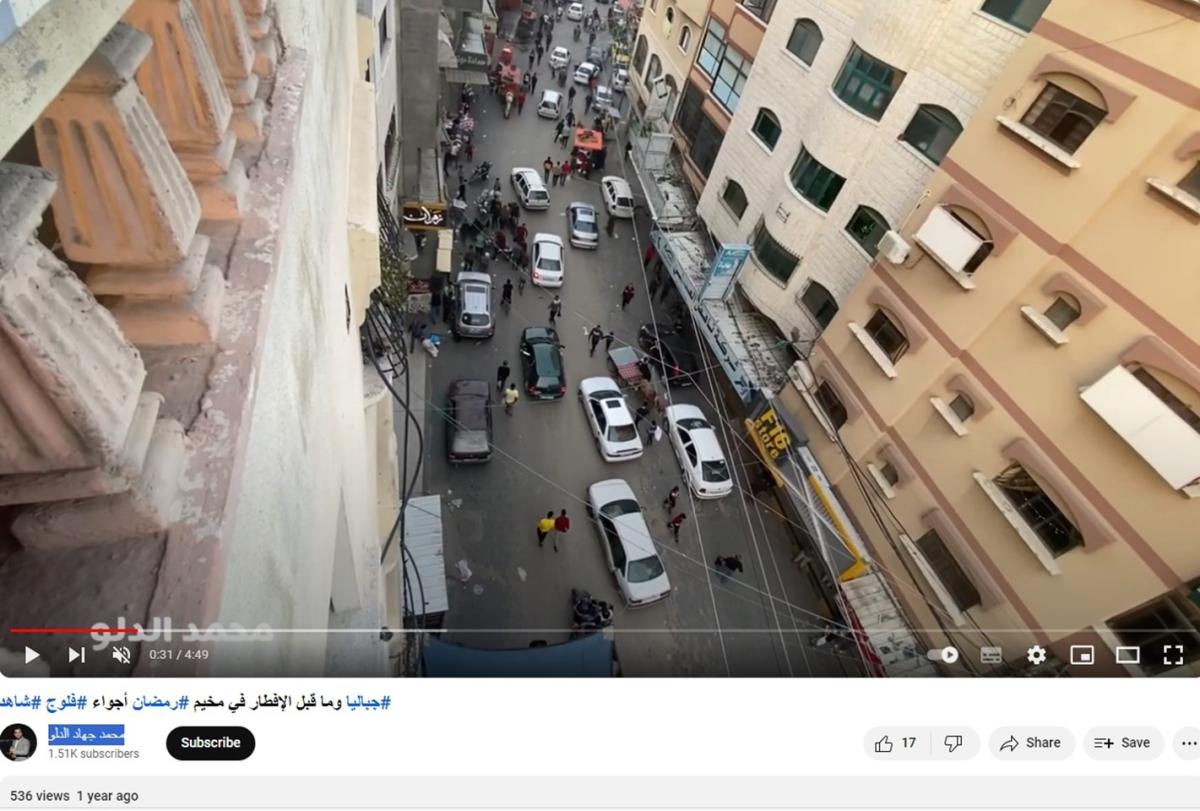
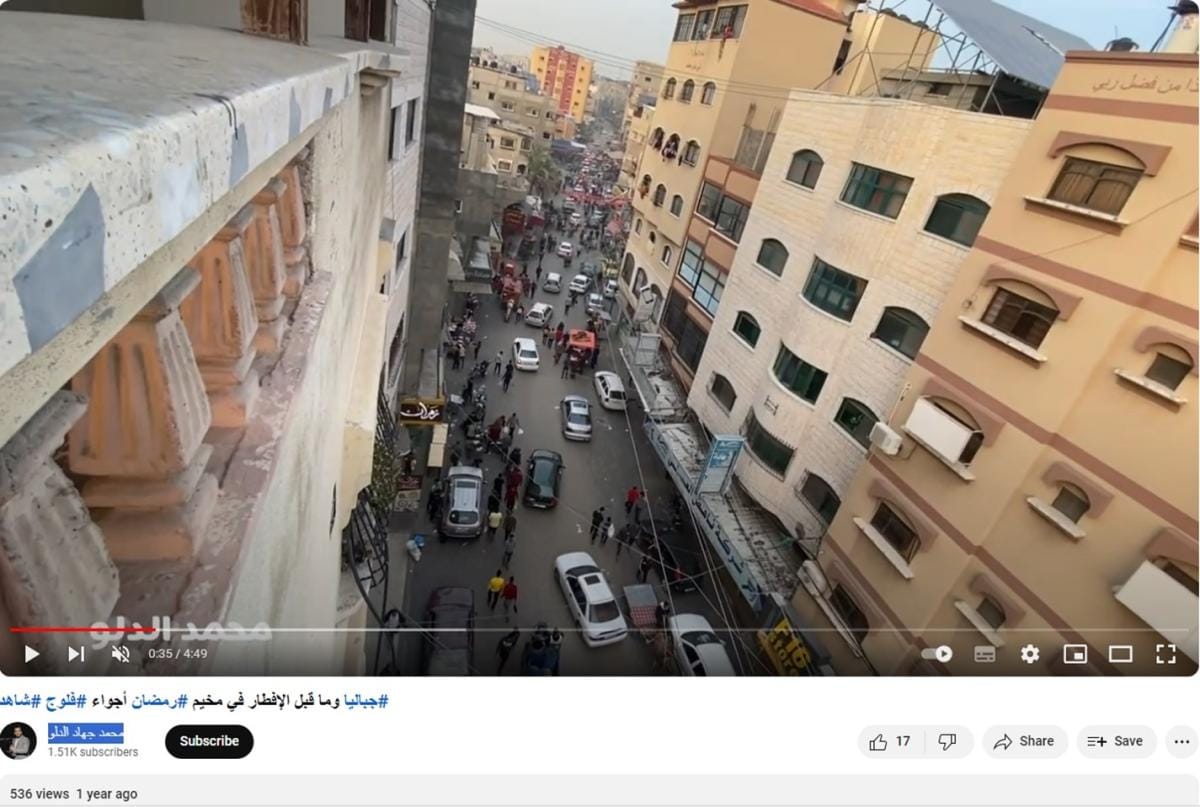
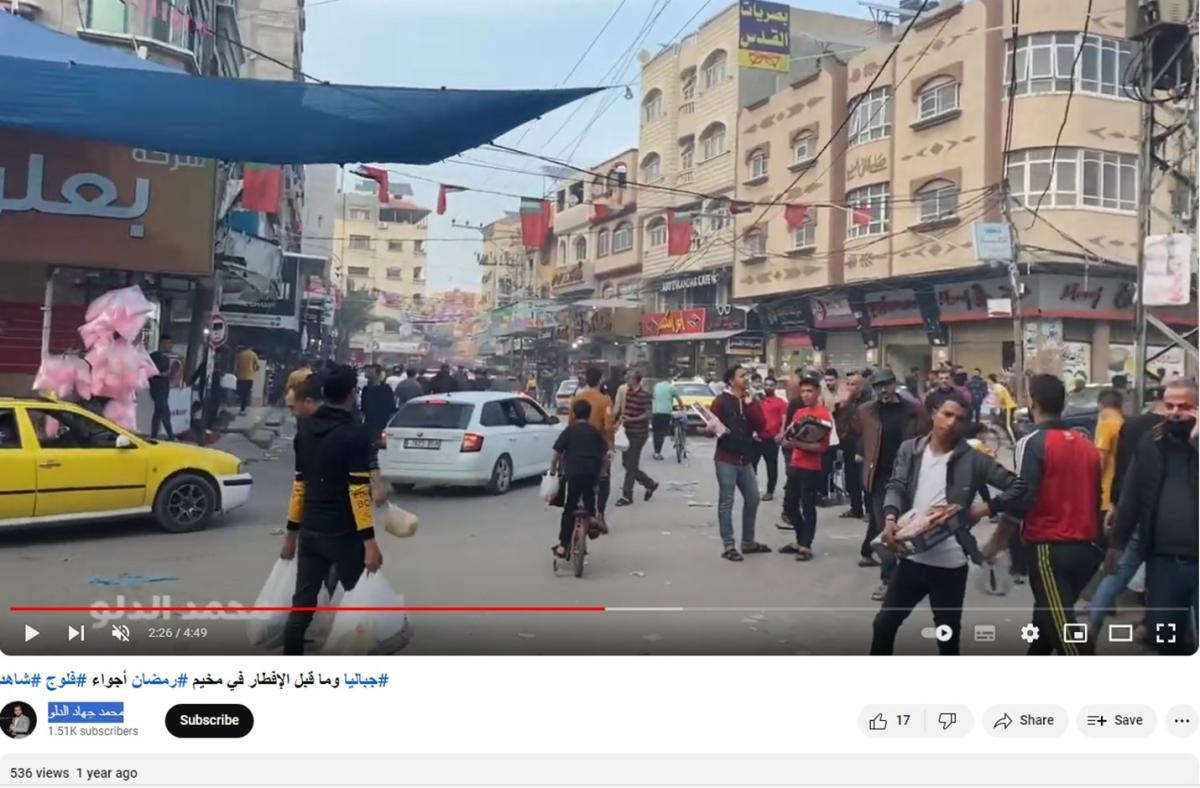
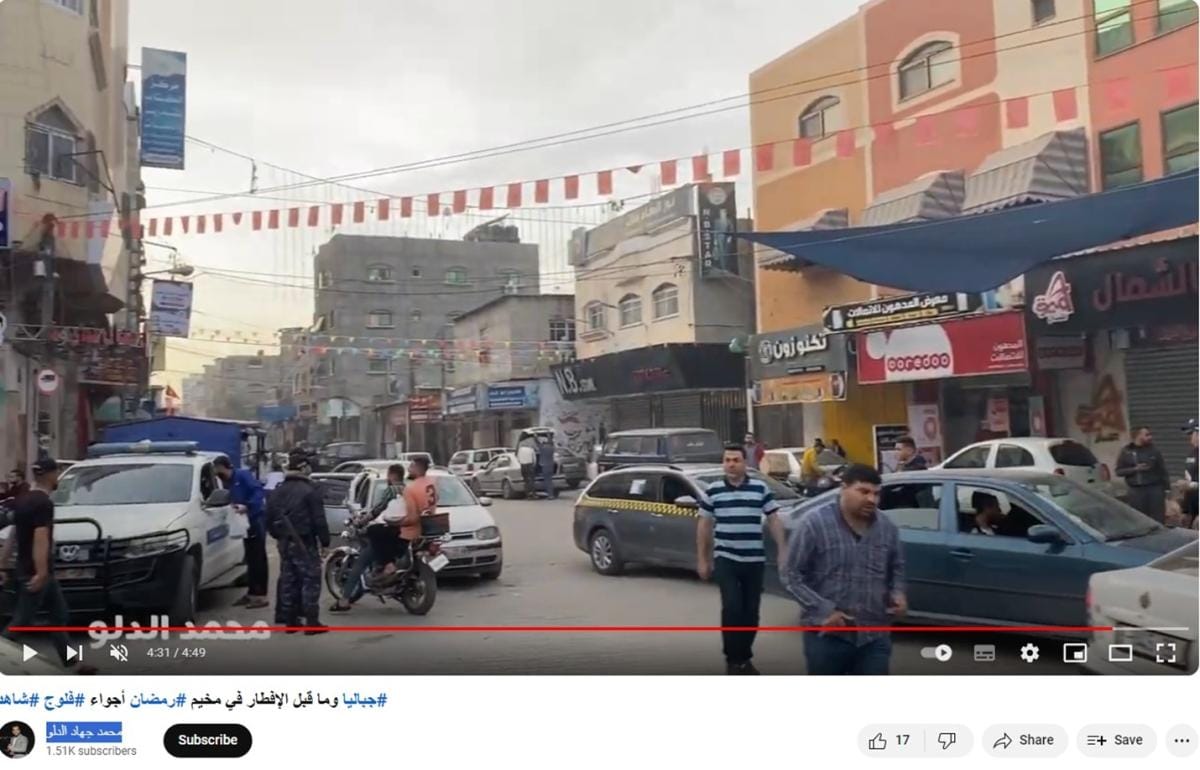
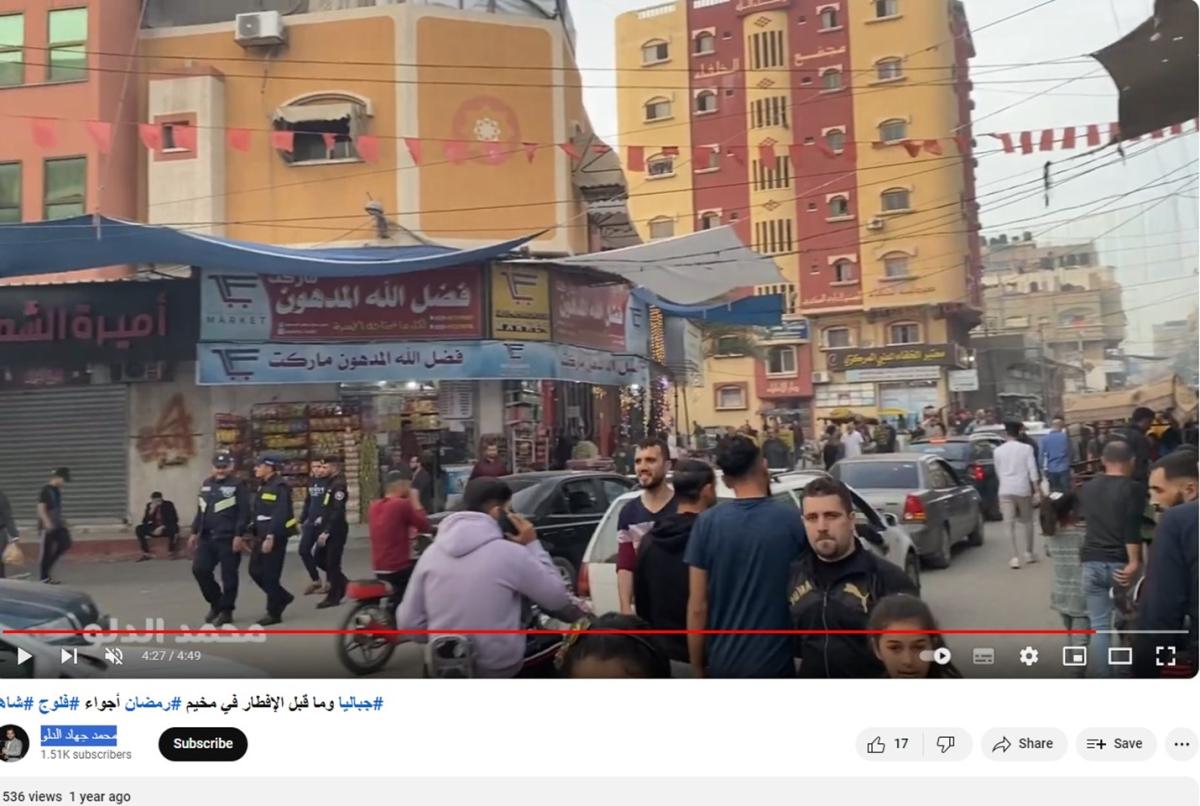
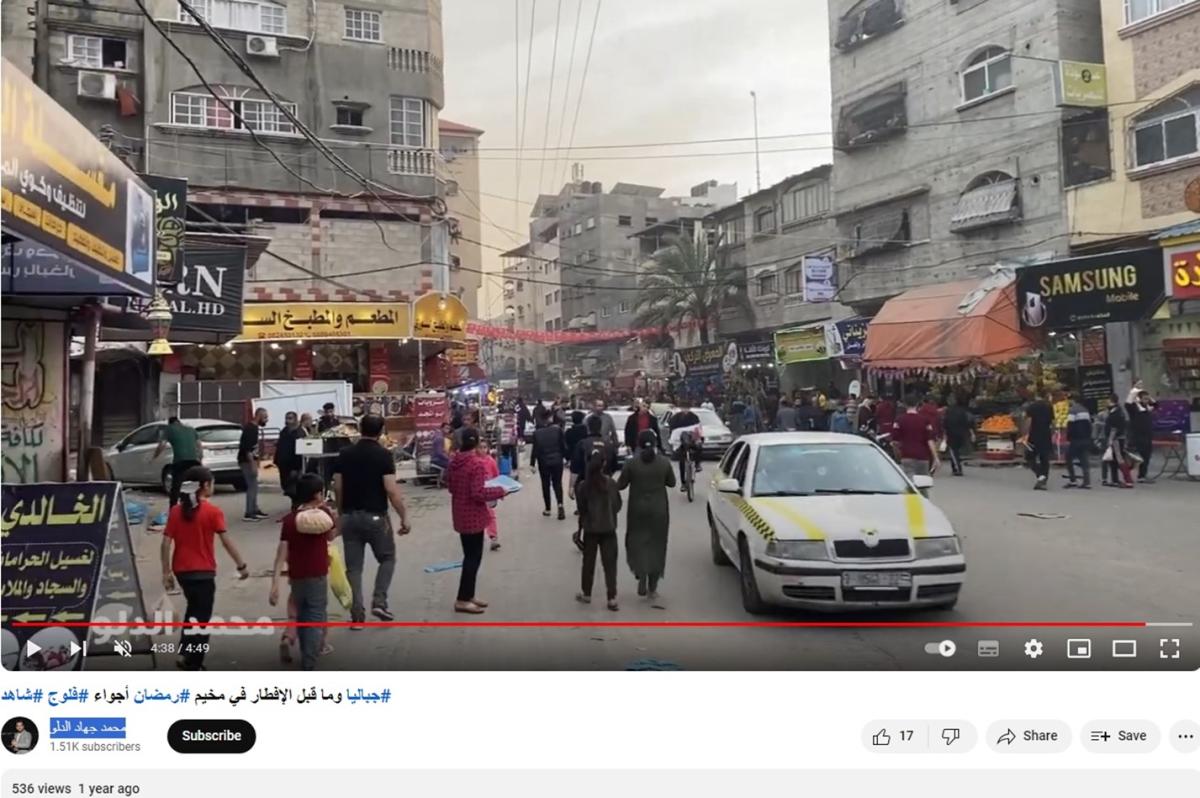
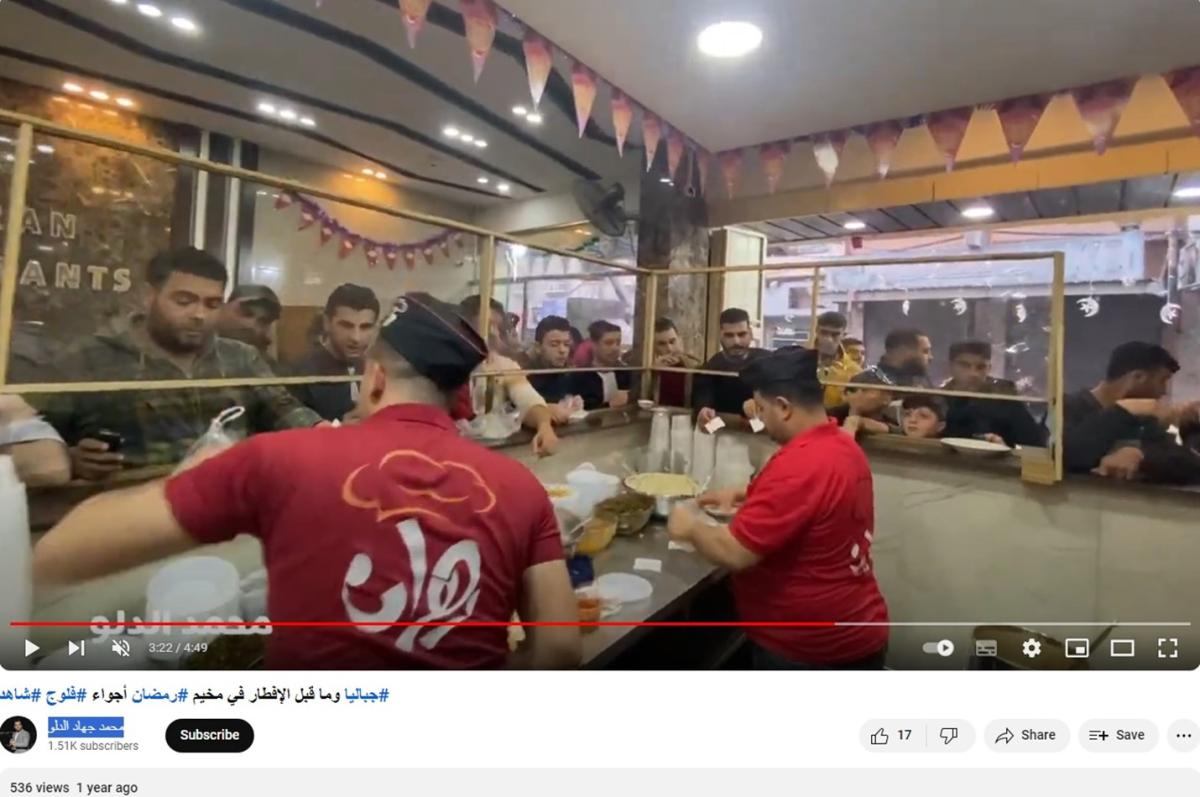
Nuseirat Refugee Camp
According to UNRWA, as of 2023, there were 85,409 registered refugees in the Nuseirat camp,[13] which is located in the central Gaza Strip.
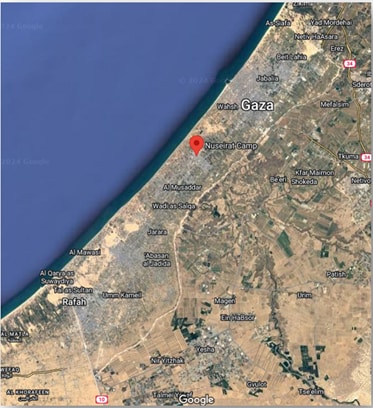
Source: Google Maps
Photos of Nuseirat, rooftop view (Source: Mohammed Al-Hour YouTube channel, تصوير النصيرات من مكان مرتفع (youtube.com), November 22, 2022)
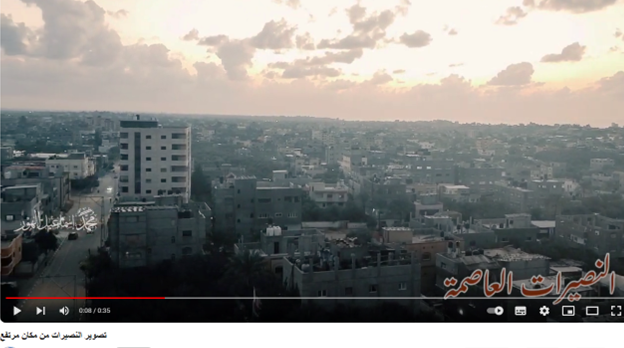

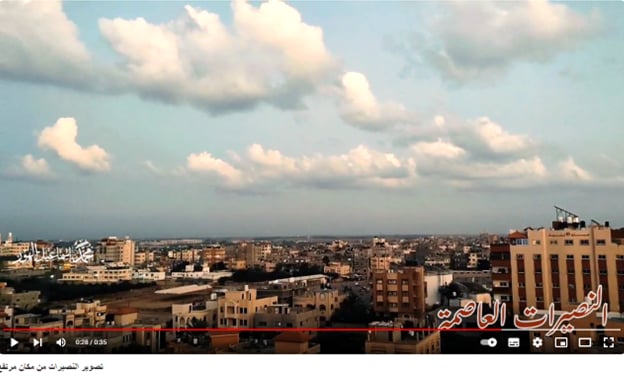
Photos from the Nuseirat Hyper Mall (الهايبر مول) (Source: Usama Al-Kakhlouth YouTube channel, جولة في الهايبر مول في مخيم النصيرات (youtube.com), uploaded April 28, 2020)
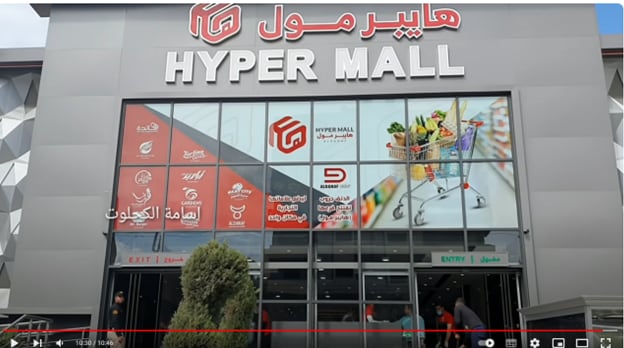
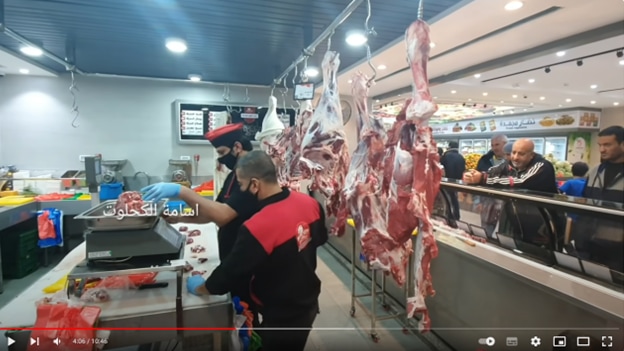
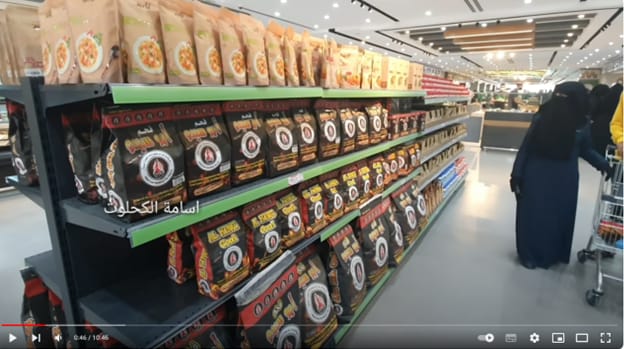

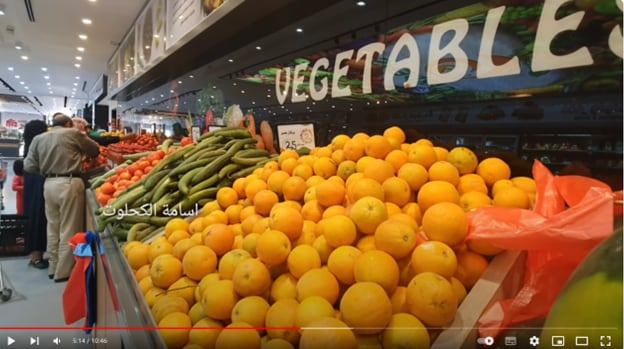
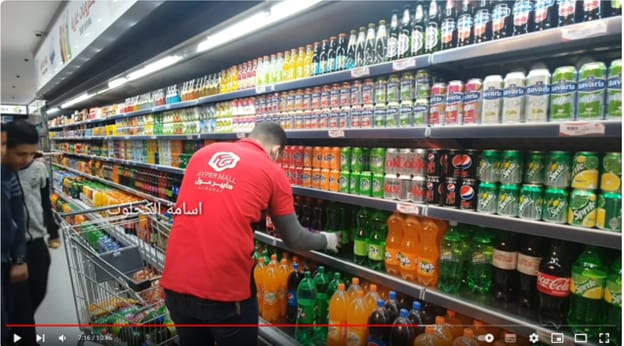
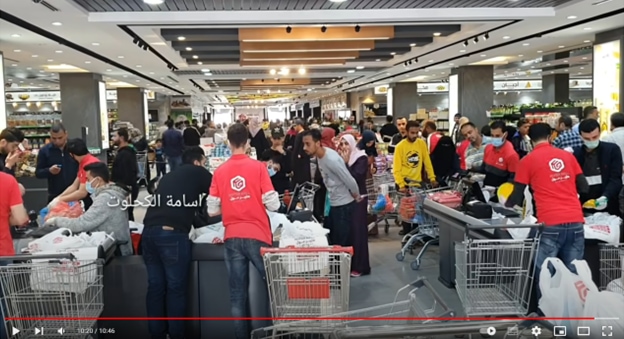
Video: A Nuseirat family prepares to serve a giant Maqlube dish ((مقلوبة for the traditional Iftar celebrations: (Source: أكبر طبخة مقلوبة في افطار مخيم النصيرات مقلوبة أبو فادي (youtube.com)
To view this video, click here or below
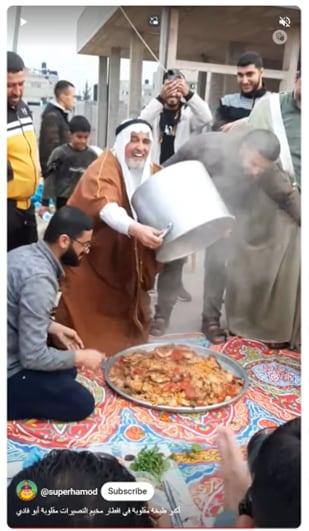
Al-Shaboura Refugee Camp And The Adjacent Tal A-Sultan Neighborhood
Al-Shaboura is a part of Rafah refugee camp, and is a refugee camp as well. It is sometimes referred to simply as the Shaboura neighborhood (حي الشابورة). To its northwest is the Tel A-Sultan neighborhood.

Source: Google Maps
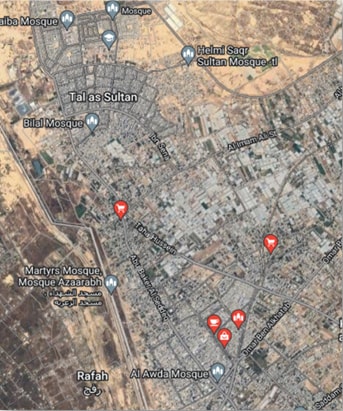
Al-Shaboura camp and the adjacent Tel A-Sultan neighborhood in Rafah, in the southern Gaza strip. Source: Google Maps
According to Palqura.com, the population of Al-Shaboura was once about 40,000.[2] There are no reliable statistics regarding the population of Tal A-Sultan.
Below are videos showing everyday life in Al-Shaboura:
1. Winter scene at Al-Shaboura (Source: Nasr Pro I YouTube Channel (نصر برو), December 16, 2020)
To view this video, click here or below:
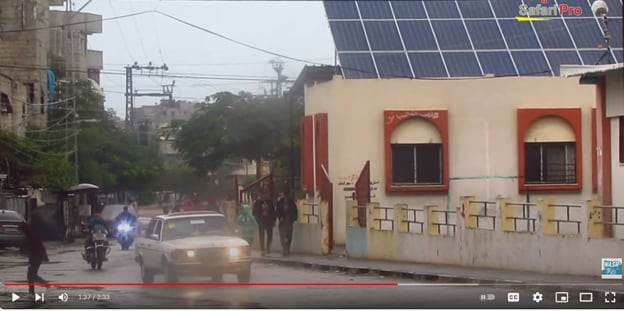
Preparing cattle for slaughter for Eid Al-Adha (Source: عجول حارتنا YouTube Channel ("calves of our neighborhood") , June 2023)
To view this video, click here or below
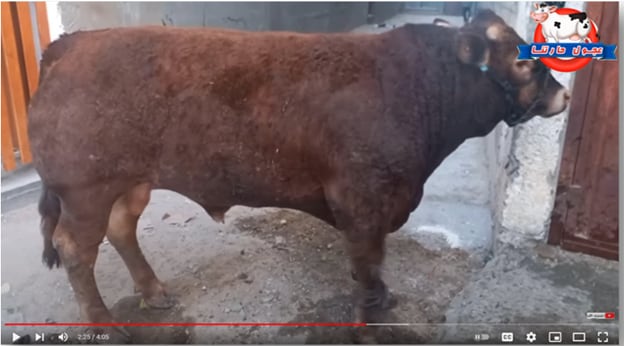
Soccer tournament in Al-Shaboura, Ramadan 2023 (Source: علم 24, March 24, 2023)
To view this video, click here or below
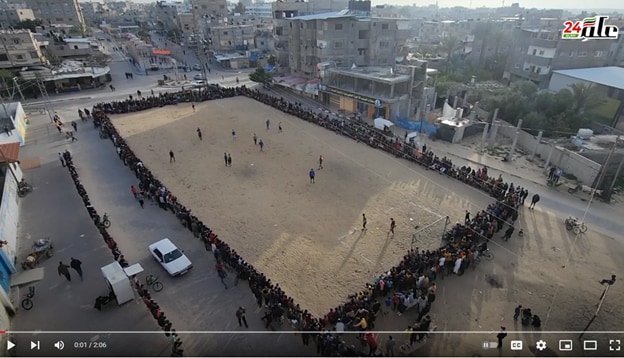
A tour of Tal A-Sultan Islamic Farm (Source: عجول غزة YouTube channel ("Calves of Gaza"), June 2022)
To view this clip, click here or below:
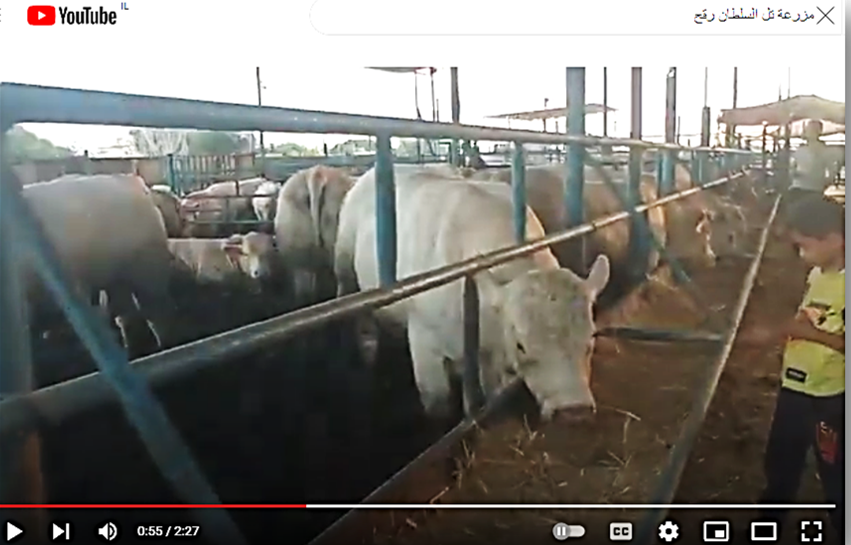
Al-Shati Refugee Camp
Al-Shati ("The Beach Camp") refugee camp is located on the northern coastline of Gaza. According to UNRWA data from 2023, it was the third-largest refugee camp in Gaza, with 90,173 residents registered as refugees.[3]

Source: Google Maps
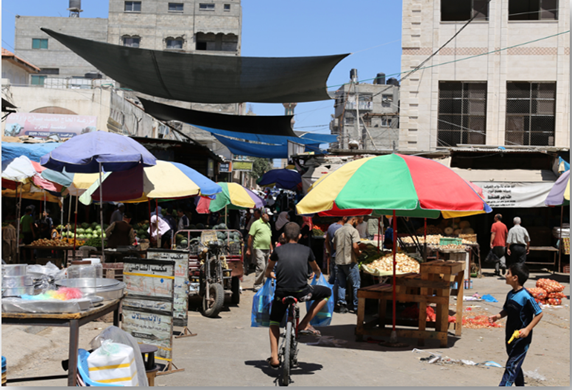
Al-Shati (Photo: UNRWA website)
Video: Ramadan sights and sounds, Al-Shati central market (Source: Muhammad Jihad Al-Dalou YouTube channel, April 3, 2022)
To view this video, click here or below:

Photos: Drone footage of Al-Shati (Source: Families of Al-Shati association (تجمع عائلات مخيم الشاطئ) YouTube channel, November 15, 2022)
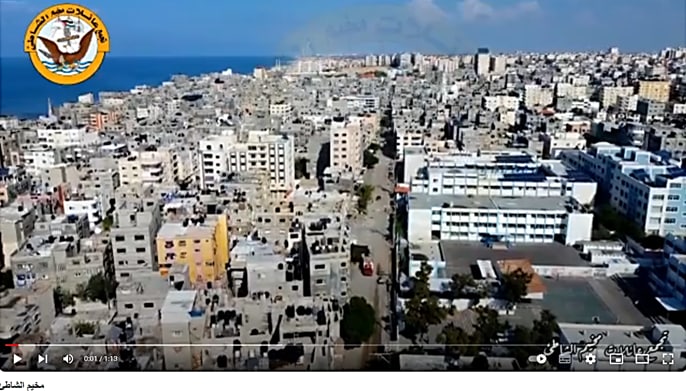
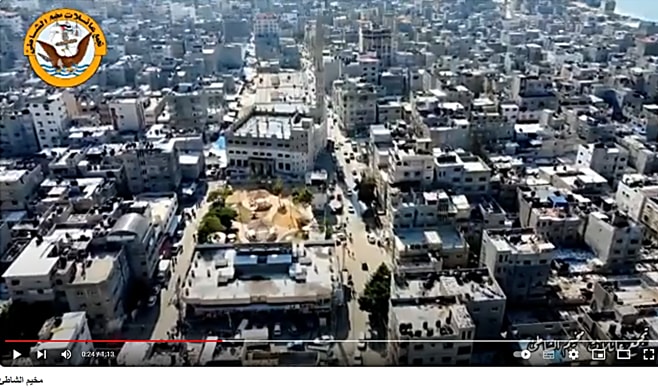

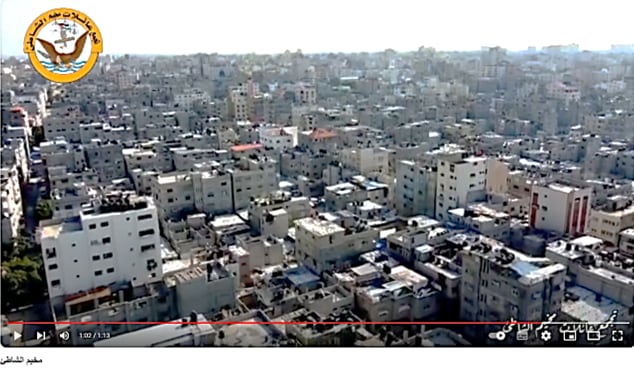
Video: Fishmongers at Al-Shati souk (Source: Families of Al-Shati association (تجمع عائلات مخيم الشاطئ) YouTube channel, 2023)
To view this video, click here or below:
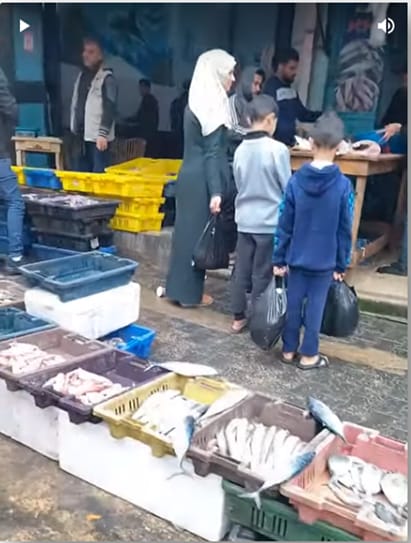
Video: The children of Mukhayam Al-Shati go back to school (Source: Families of Al-Shati association (تجمع عائلات مخيم الشاطئ) YouTube channel, January 23, 2023)
To view this video, click here or below:
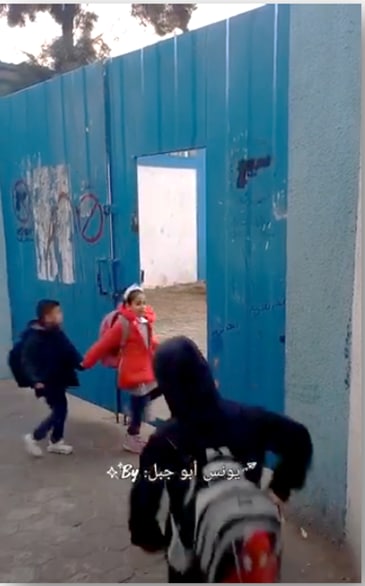
* Yigal Carmon is the President and Founder of MEMRI.
[1] Timesofisrael.com/liveblog_entry/un-chief-says-hamas-attacks-did-not-occur-in-vacuum-sparking-israeli-fury, October 24, 2023.
[2] Cnn.com/2023/12/11/middleeast/qatar-hamas-funds-israel-backing-intl/index.htmlE, December 12, 2023.
[3] Cameraoncampus.org/blog/what-norman-finkelstein-gets-wrong-about-gazan-misery, December 5, 2023.
[4] Mediaite.com/uk/concentration-camp-inmates-norman-finkelstein-on-hamas-terror-attack-in-piers-morgan-interview/, November 24, 2023.
[5] Theguardian.com/politics/2010/jul/27/david-cameron-gaza-prison-camp, July 27, 2010.
[6] Thehill.com/blogs/blog-briefing-room/news/lawmaker-news/36113-ron-paul-palestinians-in-a-virtual-concentration-camp/, January 5, 2009.
[7] Youtube.com/watch?v=02FKf2qACHA.
[8] Tiktok.com/@yousefalhelou/video/7303138221817482529, November 19, 2023.
[9] Unrwa.org/where-we-work/gaza-strip/jabalia-camp. The Arabic word for "refugee camp" is mukhayam (مخيم), from the Arabic kheyma (خيمة) which means "a tent." Hence, the term "refugee camp" literally means "a tent camp." In refugee camps in the Middle East and North Africa, refugees live in camps – for example in the Al-Hawl refugee camp in Syria, and the A-Za'atari refugee camp in Jordan. Both of these will, in this report, serve as a basis for comparison. As for Palestinian refugee camps in general, and Gaza Strip refugee camps in particular, their definition as mukhayamat (the plural of mukhayam) was a distant reminder of what these towns used to be, before they became densely crowded urbanized areas. Yet UNRWA uses a tent icon to represent Palestinian refugee camps. However, as noted in this report, prior to October 7, 100% of Palestinian refugees in the Gaza Strip lived in houses and apartments.
[10] Passia.org/media/filer_public/96/52/96520571-4642-4683-b02c-d5c7c44d41ee/factsheet_infrastructure.pdf.
[11] Passia.org/media/filer_public/96/52/96520571-4642-4683-b02c-d5c7c44d41ee/factsheet_infrastructure.pdf.
[12] Passia.org/media/filer_public/5c/9f/5c9f46b3-bcbd-4ed8-8990-a10a41132d57/factsheet_water_and_environment.pdf.
[13] Aljazeera.com/news/2021/11/2/experts-warn-of-catastrophe-facing-jordans-water-sector.
[14] Unrwa.org/where-we-work/gaza-strip/nuseirat-camp.
[15] Palqura.com/village/1305/%D9%85%D8%AE%D9%8A%D9%85-%D8%A7%D9%84%D8%B4%D8%A7%D8%A8%D9%88%D8%B1%D8%A9/147#:~:text=%D9%8A%D8%A8%D9%84%D8%BA%20%D8%B9%D8%AF%D8%AF%20%D8%B3%D9%83%D8%A7%D9%86%D9%87%20%D8%AD%D9%88%D8%A7%D9%84%D9%8A%2038%20%D8%A3%D9%84%D9%81%20%D9%86%D8%B3%D9%85%D8%A9.
[16] Unrwa.org/where-we-work/gaza-strip/beach-camp.


